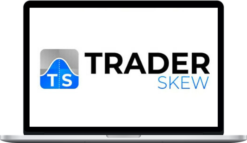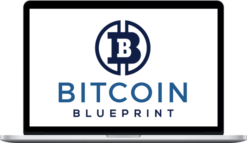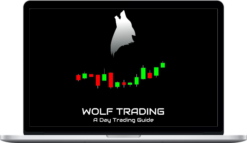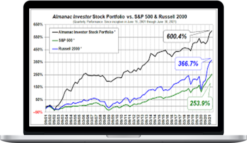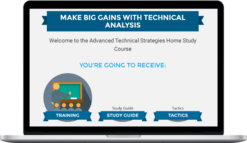Wall Street Prep – Fixed Income Markets Certification (FIMC)
$399.00 $140.00
»Instant Delivery
Description
Wall Street Prep – Fixed Income Markets Certification (FIMC)
Our globally recognized fixed income certification program prepares you with the skills you need to succeed as a fixed income trader on both the buy side or sell side
While other Fixed Income courses add formulas and complexity to hide the lack of real-world experience, Wall Street Prep’s Fixed Income Markets Certification was created by former sales and trading professionals focused on what interns, new hires and early career analysts need to know on the job.
Designed following extensive discussion with hiring managers at major investment banks, we built our Fixed Income program around practical requirements like Bloomberg, with Excel exercises to demystify how Bloomberg calculates Yield and Duration on a bond.
This fixed income markets certification course is career-focused. We begin with an overview of the Fixed Income Market, sell-side investment banks and buy-side investors; move on to exploring how central banks impact bond yields; and discuss the yield curve. We demystify different fixed income products and build a basis for bond math. Using money markets, we learn about single cashflow investments and government bonds. Finally, we look at corporate bonds, discuss credit analysis, and take a look at the impact of seniority and collateral.
What You’ll Learn In Fixed Income Markets Certification?
- Master the Bloomberg Bond DES screen
- Learn how bond traders and investors measure returns
- Decode the pricing and trading conventions of bonds
- Learn how to chart, graph and analyze bonds and yield curves on Bloomberg
- Use the Bloomberg Bond Calculators for Discounts and Yields
- Discover the Central Bank tools that move markets
- Calculate cashflows, yields and duration of actual bonds
- Demystify the difference between G, T I and Z spreads
- Understand the pricing and valuation process of new issue corporate bond
Includes 8 core courses + 3 electives
Intro to Financial Markets
This course sets the foundations of the Fixed Income Markets, providing an overview of how Investors provide capital to Issuers through the Buy Side Investors and the Sell Side Investment Banks. We discuss the main Fixed Income Investors and how they are different have different objectives and risk tolerances. We introduce different Fixed Income Investments that match with these different Investor objectives.
Intro to Fixed Income Trading & Bonds
We begin with an overview of how Bonds are Traded: Over the Counter and at an Investment Bank. We discuss the different desks are broker out by asset class and how bonds are quoted. We then proceed with an overview of Bonds, demystifying a Bloomberg DES screen and walking through the key features of a bonds. We discuss the concept of Coupons versus Yields. We conclude by analyzing how Investors and Traders measure returns, through the carry and slide of an investment.
Economics & Role of Central Bank
Changes in Supply and Demand drive changes in Prices and Yields. We begin by taking a look at a Treasuries are auction and how shifting demand moves prices. Afterwards, we expand to a macro view and look at the tools of the Fed the can shift the overall market. We begin by analyzing the indications and data that drive Fed actions.
Starting in the front end, we analyze the Fed Funds Market and Repo Market which are closely tied to the Fed’s policy rate. Next, we look at quantitative easing and how the Fed impacts longer term bonds. Combining movements in short-term and long-term rates, we discuss and analyze yield curves. We conclude with a discussion of Bank Regulation and RWA, and how Central Banks regulate commercial banks as a final tool for controlling economic growth.
Money Markets
Money Markets form a basis for the bond markets and the derivatives markets. We begin with an overview of money market investments and investors. We use Money Markets to calculate the returns of actual fixed income investments in both Excel and Bloomberg. We conclude by discussion LIBOR, the Eurodollar market, and the transition to SOFR.
Government Bonds
Building on the concepts in the Money Markets course, we analyze Bond Math and Bond Returns using Government Bonds. We start off by building the cashflows of two Government Bonds and valuing those bonds by discounting the cashflows using strips. We then converted our discount value to a price by adjusting for accrued interest and demystifying treasury pricing convention. Afterwards, we calculate both the yield and duration on are case study bonds, both in Excel and in Bloomberg.
Corporate Bonds
In this course, we examine Corporate Bonds and how they are priced, valued and traded. We begin by discussing credit spreads and discussing the key credit spread (T, G, I and Z). We then discuss trading conventions and mechanics, from cashflow, price calculations, trade execution process and calculating DV01s. Next, we work through the New Issue Process, how a new bond is valued, and the initial coupons and yields are agreed to between the investors and the issuers. We conclude with a section on credit analysis and an example of a High Yield Bond.
Mortgage Backed Securities
Agency Mortgage Backed Securities are the second largest asset class in Fixed Income. In this course, we provide an overview of how the Mortgage Market and how Mortgages are securitized. Prepayments in mortgages add complexity to how we value mortgages. We cover the CPR and PSA prepayment models and their impacts on Weighted Average Life, Yields and Duration.
We discuss how changing interest rates impact duration, and discuss the impacts of convexity. We analyze all of this on Bloomberg, including the collateral details, Yield Table and Option Adjusted Spread. Next, we discussing the TBA market and trading strategies including the Dollar Roll. We conclude by discussing re-securitizations including REMICS and CMOs as a way to divide and reallocate risk within a Mortgage Backed Security.
ESG Investing, Green Bonds and Social Bonds
The last decade has seen exponential growth in ESG investing worldwide. Designed for those seeking to learn about the role of Sustainable Finance at an Investment Bank, this course explores exactly how this transformation happened and how the market formalized the structure and conventions for Green Bonds and Social Bonds. It discusses both from the issuer and investor perspective, why ESG, Green and Social Bonds have taken such a prominent role. It analyzes the structure and pricing of green and social bonds that the instructor has personally brought to market.
More courses from the same author: Wall Street Prep
Delivery Policy
When will I receive my course?
You will receive a link to download your course immediately or within 1 to 21 days. It depends on the product you buy, so please read the short description of the product carefully before making a purchase.
How is my course delivered?
We share courses through Google Drive, so once your order is complete, you'll receive an invitation to view the course in your email.
To avoid any delay in delivery, please provide a Google mail and enter your email address correctly in the Checkout Page.
In case you submit a wrong email address, please contact us to resend the course to the correct email.
How do I check status of my order?
Please log in to TradingAZ account then go to Order Page. You will find all your orders includes number, date, status and total price.
If the status is Processing: Your course is being uploaded. Please be patient and wait for us to complete your order. If your order has multiple courses and one of them has not been updated with the download link, the status of the order is also Processing.
If the status is Completed: Your course is ready for immediate download. Click "VIEW" to view details and download the course.
Where can I find my course?
Once your order is complete, a link to download the course will automatically be sent to your email.
You can also get the download link by logging into your TradingAZ account then going to Downloads Page.



